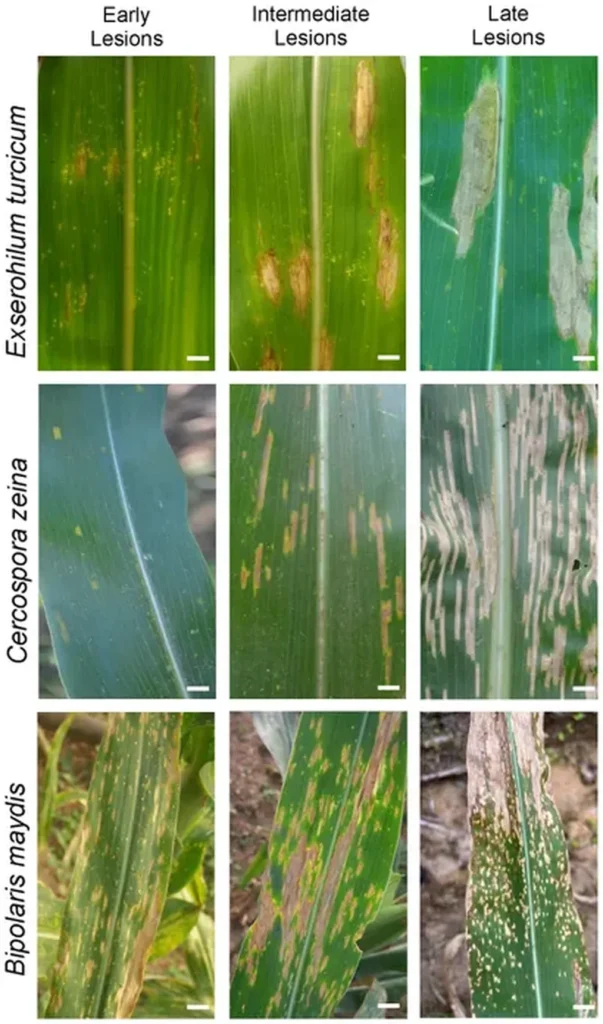In the cat-and-mouse game of plant pathology, a stealthy fungal invader has been caught red-handed, thanks to cutting-edge transcriptomic research. Cercospora zeina, the culprit behind maize’s gray leaf spot (GLS) disease, has been found to employ a sophisticated infection strategy, lying dormant for up to 28 days before rapidly proliferating and causing symptoms. This discovery, published in *Frontiers in Plant Science*, could reshape our understanding of fungal pathogens and open new avenues for crop protection.
The study, led by Trystan Nadasen from the University of Pretoria’s Department of Plant and Soil Sciences, used deep RNA sequencing to uncover the pathogen’s behavior during its infective period. “We found that C. zeina accumulates biomass rapidly after the latent period, showing a nearly 50-fold increase as symptoms appear,” Nadasen explained. This latent phase is a critical window where the fungus evades the plant’s immune system, setting the stage for a sudden onset of disease.
The research revealed two distinct transcriptional waves during the infection process. The first wave involves genes related to cellular growth, maintenance, and immune avoidance, while the second wave is dominated by genes involved in detoxification and carbohydrate catabolism. This dual-phase strategy allows the fungus to establish itself within the plant before switching to a more aggressive, necrotrophic phase.
One of the most intriguing findings was the identification of 140 putative effector genes, which are differentially expressed over the infection period. Effectors are molecules produced by pathogens to manipulate host plants, often suppressing immune responses or promoting disease. Three of these effectors—CzEcp2, CzNIS1a, and CzNIS1b—were found to induce plant immunity in Nicotiana species, resulting in cell death. “The CzNIS1a effector required a signal peptide for activity, indicating that it is most likely secreted into the apoplast for this function,” Nadasen noted. The CzNIS1b family member, previously undescribed, has a unique structure with an N-terminal domain similar to CzNIS1a and a C-terminal domain made up of four alpha helices.
The commercial implications of this research are significant. Understanding the infection biology of C. zeina could lead to the development of more effective disease-resistant maize varieties. By identifying the specific effectors that trigger immune responses, breeders and genetic engineers can target these genes to enhance crop resilience. “This work provides a foundation for future research into the infection biology of C. zeina,” Nadasen said. “It suggests that a cohort of C. zeina effectors expressed during the mid-stage of infection have functions for which receptors are present in non-host species like tobacco.”
The study also highlights the importance of transcriptomics in unraveling the complex interactions between pathogens and their hosts. As Nadasen and his team continue to explore the infection strategies of C. zeina, their findings could pave the way for innovative agricultural technologies and practices. For farmers, this means better tools to combat gray leaf spot and protect their crops, ultimately leading to higher yields and economic benefits.
In the ever-evolving landscape of plant pathology, this research is a significant step forward. By shedding light on the stealthy tactics of C. zeina, scientists are not only advancing our understanding of fungal pathogens but also opening new doors to safeguarding one of the world’s most important crops.

